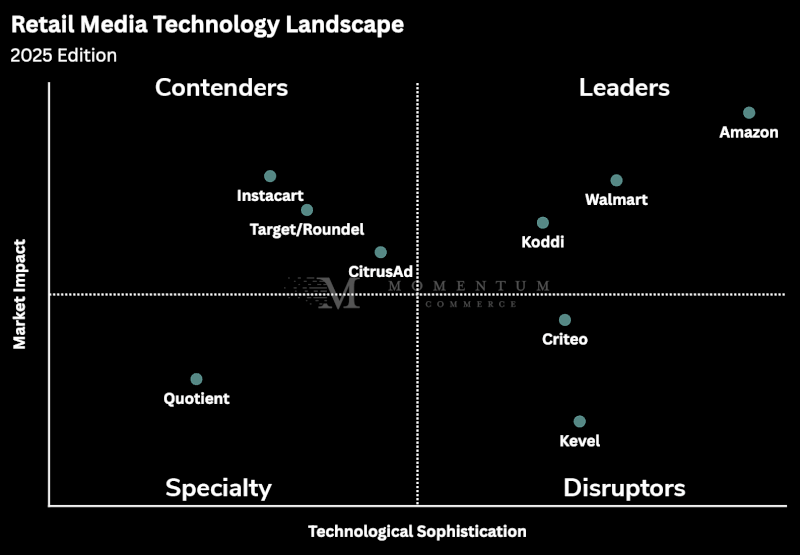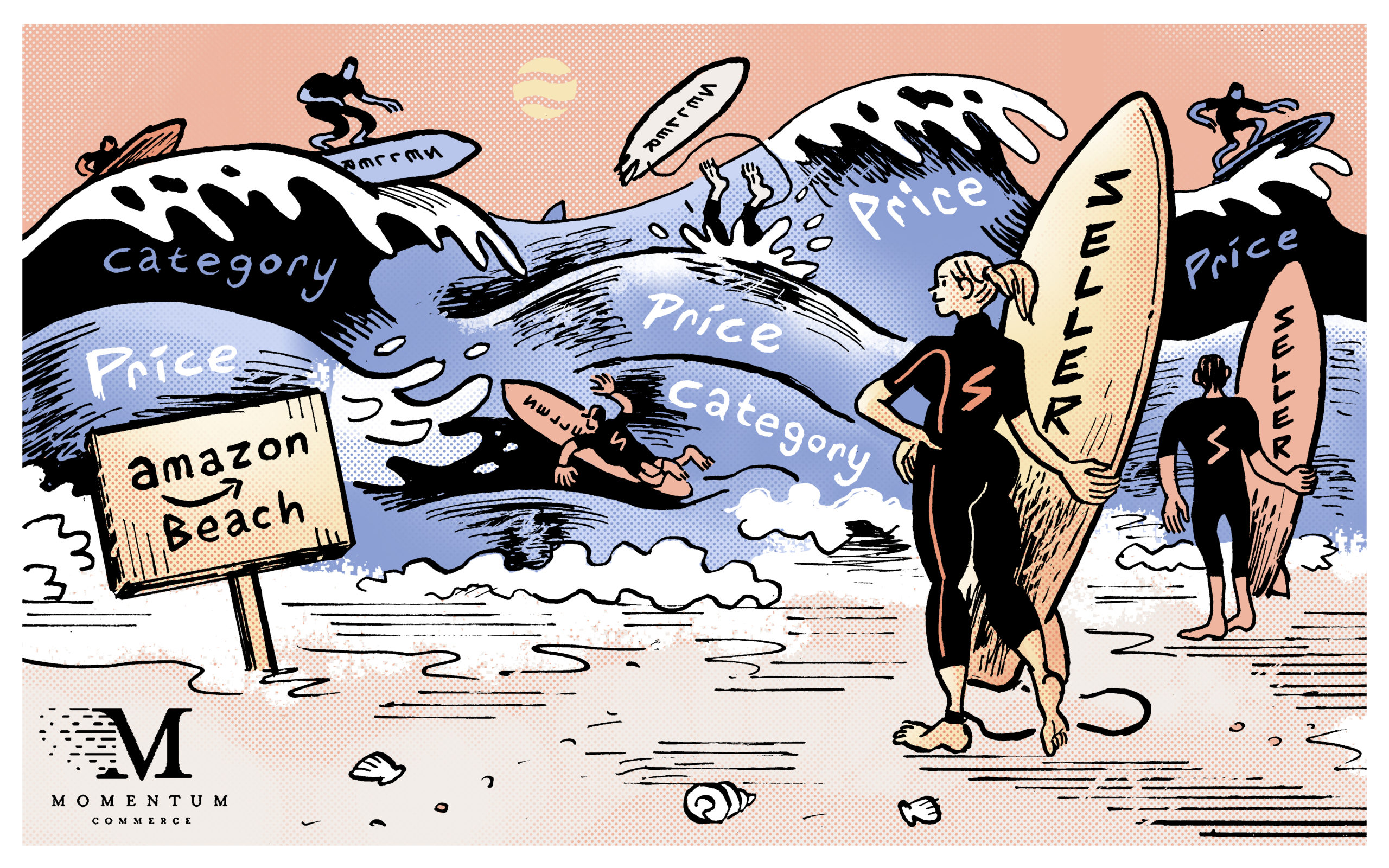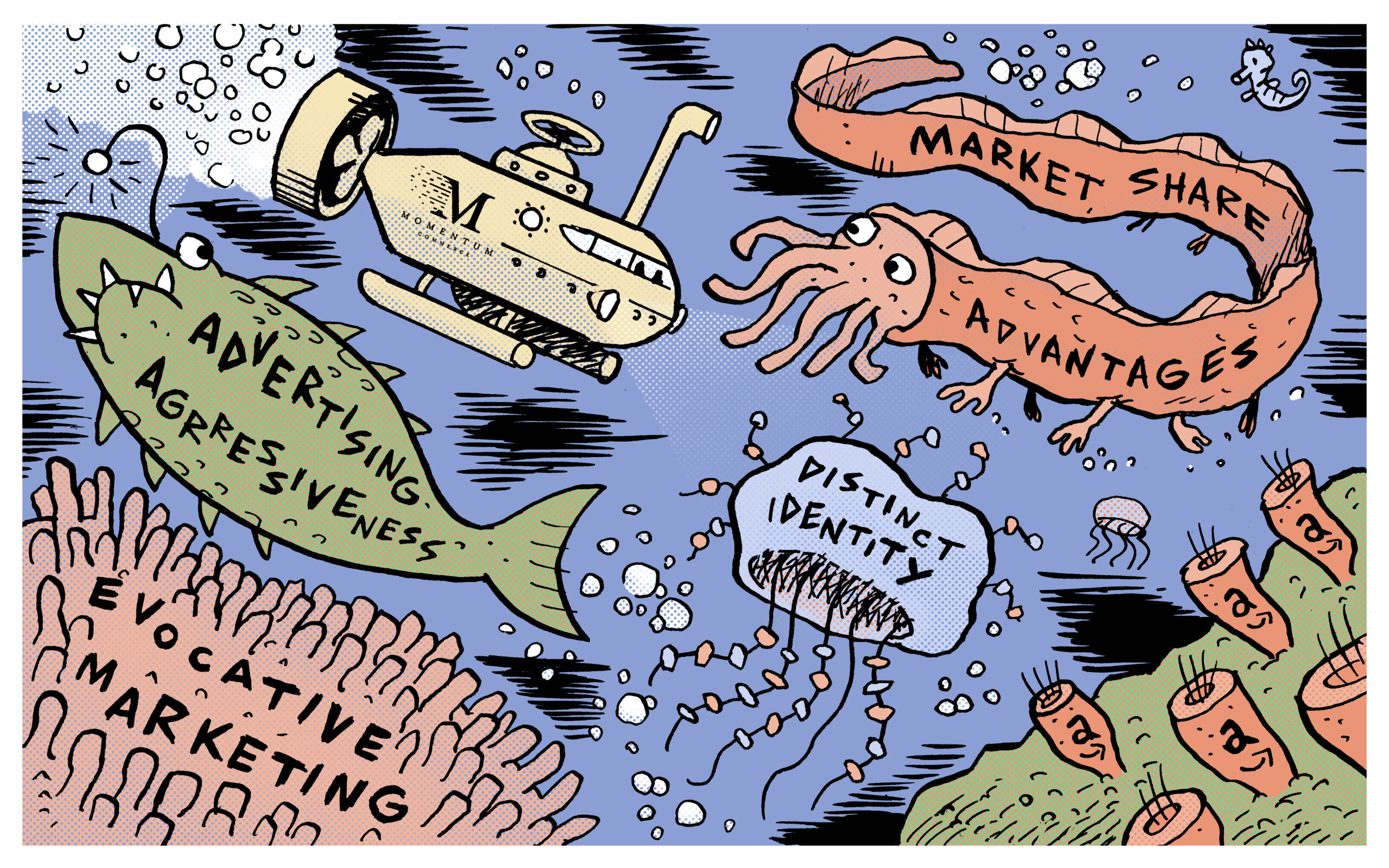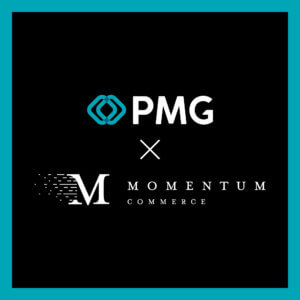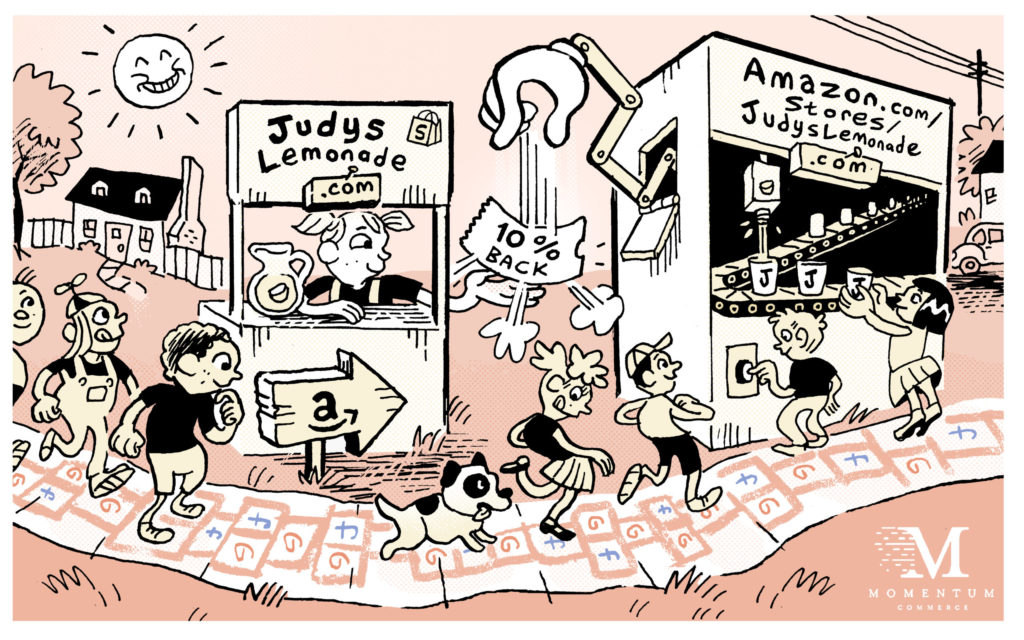
A Marketer’s Take on the Amazon Brand Referral Bonus
Last week I sat down with seven terrific marketers to discuss Amazon’s recent announcement of the Amazon Brand Referral Bonus. This program is designed to encourage brands to direct their Non-Amazon marketing efforts to their Amazon storefront and product pages. The Amazon Brand Referral Bonus specifically offers a 10% rebate on any sales attributable to non-Amazon marketing sources within Amazon Attribution (14 day post-click) to qualifying brands (3P, brand-registered & operating in specific categories and markets).
I reached out to Mike Miller, Worldwide Director of Amazon Brand Program and Selling Partner Development @ Amazon and he had this to say about the program: “We’re launching the Brand Referral Bonus to help brands make their marketing dollars go further. When brands direct their non-Amazon marketing traffic to our store, we’ll provide them with a bonus averaging 10% of the applicable sales.”
Amazon Brand Referral Bonus Workflow
- Marketer tags up click-URLs directing to their Amazon Storefront or Product Detail Pages within Amazon Attribution for various marketing campaigns (ex. email, paid social, paid search, programmatic and influencer campaigns).
- Marketer drives traffic through the URLs (ex. 10,000 paid search clicks for $20,000 in media cost)
- Amazon Attribution tracks all sales of products for that brand that occurred within 14 days of a click on the tracked URL. (ex. $50,000 in revenue for an effective 40% Ad Spend / Sales ratio)
- Amazon returns approximately 10% of the sales value back to the brand in the form of a rebate on future “marketplace selling fees” two months later (ex. $5,000 rebate which adjusts the non-amazon marketing A/S % down to 30%).
Brand Marketers Sound Off on Amazon’s Brand Referral Bonus
The economics are pretty compelling here. However, brand perspectives on this update vary pretty widely based on the relative maturity and scale of DTC.com efforts.
Scott Bishop, who leads Amazon for the nation’s oldest Direct-to-Consumer brand, Oriental Trading Company, described the basic perspective of his company as, “Why would we ever send anyone to Amazon when we can capture them directly?”. Of course, Oriental Trading Company has been leveraging customer data to maximize customer life-time-value for over a century so the idea of “losing the customer to Amazon is very different for them than it would be for a brand with less of a DTC heritage.
Ian Lewis who leads Amazon for BIGNAMECOMMERCE, the parent company of Envelopes.com and Amazon Brand, LuxPaper had a similar point view, “I’d love to send more traffic to Amazon because I’m in charge of growing our Amazon business, but the idea of redirecting our web traffic to Amazon would not be very popular here over all.”
Meanwhile, Kaitlyn Kobida who is the Director of Ecommerce for Healthy Meat Snack Brand, CHOMPS, views this program very differently, “We see this as an opportunity to scale marketing investment beyond what we had originally planned. The more money we can spend in the program here the more we can reinvest in our business.”
Similarly, Lauren Kendall who is the recently appointed Senior Media Manager of Earth Rated – the company behind the number one selling product in the pet supplies category on Amazon said, “Sending traditional Paid Search and Paid Social traffic to Amazon represents a massive opportunity for emerging brands and the Brand Referral Bonus makes testing a complete no-brainer.”
Brand Perspectives on How to Test Amazon’s Brand Referral Bonus Program
- Use Email: Scott Bishop from Oriental Trading Company suggested that even for a die-hard customer marketing firm like his, this update may warrant an email test. “I’d be curious to run a campaign against our inactive buyer list just to see how many we can reactivate by landing them on Amazon instead of our direct site.” Scott’s theory is two-fold, first, this may be a reasonable way to win back customers that have defected to Amazon with compelling economics, and second, Amazon’s superiority in conversion (one-click check out with prime shipping) may remove some friction that has held back other efforts to reactivate dormant shoppers. Kaitlyn Kobida of Chomps provided some encouragement for this approach, “We’ve done some tests where we add in both Amazon and DTC.com product links to some of our email marketing campaigns. We’ve found that by identifying the preferred shopping destinations of our customers and marketing to them accordingly, we can generate more sales.”
- Promote Amazon-Exclusive SKUs: Ian Lewis of BIGNAMECOMMERCE mentioned, “While it may be challenging for us to use Non-Amazon Marketing to promote SKUs that we sell on our direct site, I could see this being a valuable tool to subsidize marketing efforts for SKUs that are exclusive to Amazon.” He elaborated that while it may not make sense for his business, “It could make sense for a lot of brands to compare the relative contribution rates (to sales and margins) of various products across DTC.com and Amazon channels and then to prioritize landing pages for non-amazon marketing efforts accordingly.”
- Revisit inefficient Paid Search or Paid Social Ad Targets: Kaitlyn Kobida commented,“ This program may help us scale our Google marketing dollars. We had already been experimenting in this area by taking some category search terms that were less profitable when directing to our direct site and re-directing them to Amazon product pages in effort to drive higher conversion rates. Now with this additional economic incentive, we are looking to get more aggressive with this strategy.” But experienced marketers also caution realism here, David Kennedy, Momentum Commerce’s Vice-President of Client Services reminded everyone, “The reason that Facebook is so good at finding and scaling efficient audiences is that their targeting and bidding algorithms are generally trained by a direct conversion feedback loop. When marketers send traffic to Amazon, Facebook is not able to model and find look-alike audiences with the same precision. The same principle holds true for paid search on Google.”
- Activate the Amazon Flywheel with Influencers: Molly Doe, Momentum Commerce’s Vice President of Client Development commented, “Influencers have become one of the most effective methods for launching new products. Given the increasing costs of onsite advertising on Amazon and the “Halo benefits” of effective product launches on the platform, I’m excited to see if Brands will respond to this program by encouraging their influencers to link to Amazon storefronts more frequently.”
Five quick thoughts from Momentum Commerce on the Amazon Brand Referral Bonus
- For the right brands this is a BIG DEAL. But it isn’t for everyone.
- Initial testing should isolate specific products and specific channels in order to inform more accurate measures of value.
- Brands should tread lightly here and not cannibalize direct sales relationships with customers. Let’s not bet the farm just yet. What happens if Amazon moves the bonus payment down to 2% in six months?
- There is likely some element of “first-mover advantage here” particularly in the application of non-Amazon Marketing dollars to support new product launches on Amazon. 3P brands tracking through Amazon Attribution should be able to yield unfair economic advantages while the bonus rates are this high.
- An increase in Non-Amazon Marketing driving Amazon sales will likely increase the importance of having an optimized Amazon Storefront as the storefront will often be a better destination for mid and upper funnel campaign traffic than straight Product Detail pages.


